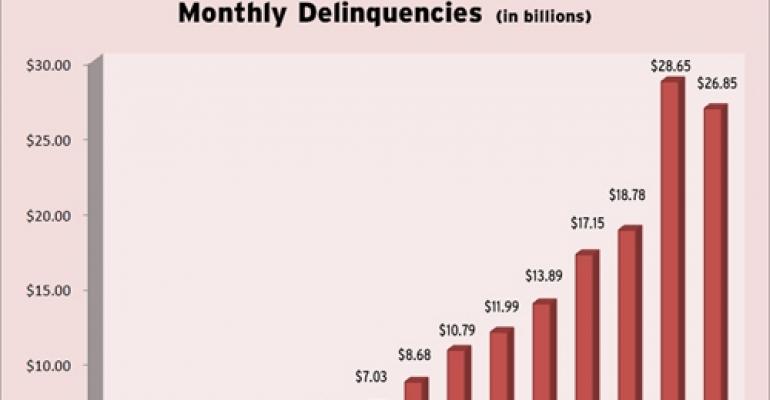According to a new report from Reapoint LLC, the delinquent unpaid balance for CMBS decreased in July for the first time since August 2008—snapping a string of 10 straight monthly increases. The balance fell to $25.68 billion from $28.65 billion a month prior. However, the good news may prove to be short-lived.
The decline came after nearly $4.8 billion of General Growth-sponsored loans were returned to current payment status following a 30-day delinquent status in June. According to Realpoint, “While the ultimate resolution of these GGP-sponsored specially-serviced loans has yet to be determined, many were reported as current in July 2009 after multiple master servicers made modifications to their systems to account for the non-default rate interest-only payments being made on previously amortizing (principal and interest required) loans.” The loans remain on Realpoint Watchlists for potential future delinquencies or workouts.
Despite the drop, the $25.68 billion figure represents a 511 percent increase from the same month last year and is now 12 times the low point of $2.21 billion reached in March 2007. Furthermore, while the overall volume dropped, the improvement was only in the “30-day delinquency” category. Notably, 90-day delinquencies, foreclosures and REOs all rose in aggregate for the 20th straight month. The volume of loans in those categories grew by $2.15 billion from June and is now up 377 percent from the same period last year. The total unpaid balance for all CMBS pools under review by Realpoint was $819.2 billion in July 2009.
The resultant delinquency ratio for July 2009 was 3.14 percent. This is down from the 3.5 percent figure in June, but six times the 0.49 percent figure from last July.
Overall, Realpoint still expects the delinquent unpaid CMBS balance to continue along its current trend and grow towards $50 billion before the end of 2009. The firm wrote, “Based upon an updated trend analysis, we project the delinquency percentage to grow in excess of 6 percent before year-end 2009 (potentially approaching and surpassing 8 percent under more heavily stressed scenarios)”.


